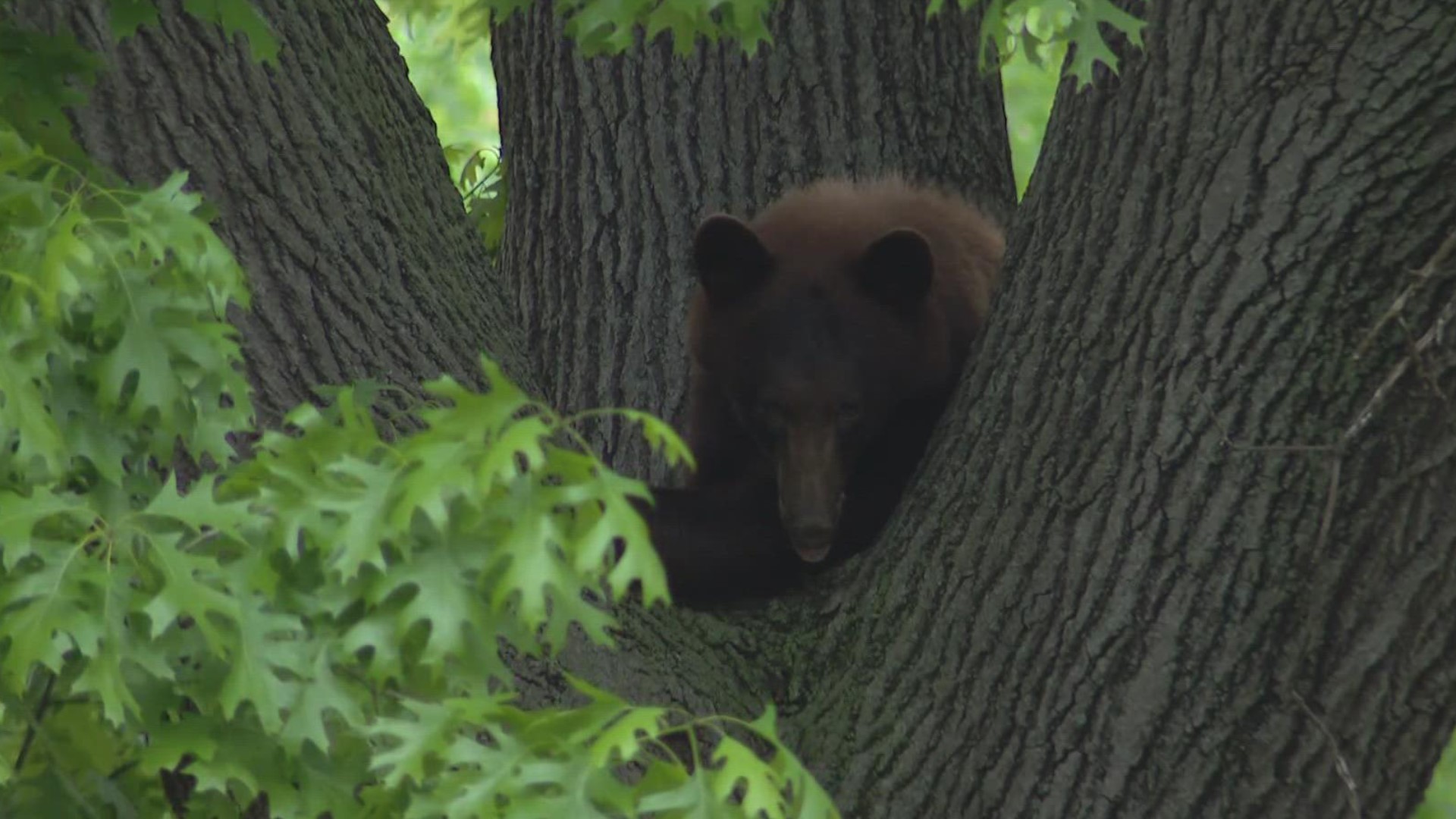ST. LOUIS COUNTY, Mo. — Monday is the first day of Missouri’s first bear hunting season.
More than 6,000 people applied for hunting permits for the state’s bear hunting season back in May and 400 hunters were randomly selected to participate.
There is a cap of 40 black bears that can be hunted state-wide. So, most hunters will probably not come across or kill a bear this year.
The10-day long hunting season ends Oct. 27.
Click here for a list of Missouri black bear hunting season regulations.
Each of the state’s three bear management zones has a harvest quota to fill.
To make sure only the approved number of bears are being hunted, the state is keeping track of the numbers using a phone system.
The hunters have to dial 800-668-4045 each morning to check the harvest numbers in their zone and make sure the harvest quota hasn’t been reached.
The harvest numbers will be tallied up at 10 p.m. every day. The line will be updated by midnight.
The St. Louis area is located in Zone 2. The bear zone harvest number is 15. Once hunters in our area kill 15 bears, the season is over for this region.
5 On Your Side talked with Laura Conlee, a furbearer and black bear biologist with the Missouri Department of Conservation, about the bear population in the state and ask why now is the right time to have a hunting season.
“Our bear population here in Missouri is growing quite steadily at this point. We have determined it’s reached a point that it can sustain a very limited and highly regulated harvest,” she said. “We estimate our bear population to be at about 800 bears, with a growth rate of about 9% annually. With that growth rate, that number should double in about a decade.”
We have had a number of bear sightings in the St. Louis area this year.
Conlee said the sightings are a biproduct of a healthy bear population, but she is seeing some bears moving outside their typical areas.
“When we think about bear range in Missouri, we’re really talking about south of Interstate 44, really the southern third of the state where we have the biggest track of forest land. But, with that growing bear population, we have bears being established in the Lake of the Ozarks,” she said. “We had bears showing up north of the Missouri river and in central Missouri this year. We’ve had an increased number of bear sightings in the St. Louis area. That’s something that has been happening steadily as that population grows.”
She said the hunting season was already in the works.
But the sightings mean we need to be more “bear aware” and ensure we’re doing everything we can not to cross paths with bears on a regular basis.
Conlee suggests leaving a bear alone if you see it in a tree. Don’t take photos or try to get it from the tree.
If you come face to face with a bear, you can talk to the bear in a stern voice, make yourself look bigger and slowly back away.
Always give the bear an escape route and don’t make it feel trapped. Most times, they’ll want to run away.
If you do have an unexpected encounter with a bear, follow the safety tips and, once you get clear of the bear, report it online to the Missouri Department of Conservation.
Conlee said it helps experts use these sightings to track the bears’ roaming range.

